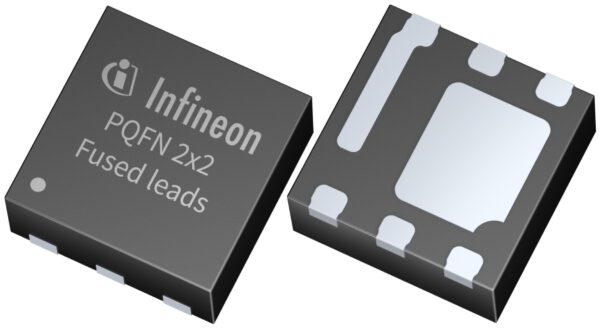Munich, Germany – July 26, 2023 – A small footprint of discrete power MOSFETs plays a critical role in achieving space savings, cost reduction, and easy-to-design applications. Additionally, higher power density can lead to layout routing flexibility and overall system size reduction. By expanding the current PQFN 2×2 portfolio with the new best-in-class OptiMOS™ power MOSFETs, Infineon Technologies AG (FSE: IFX / OTCQX: IFNNY) offers benchmark solutions optimized for efficiency and performance in a small footprint. The new products are ideal for applications like synchronous rectification in switched mode power supplies (SMPS) for servers, telecom, and portable– and wireless chargers. Additional applications also include electric speed controllers for small brushless motors in drones.
The new OptiMOS 6 40 V and OptiMOS 5 25 V and 30 V power MOSFETs further optimize the proven OptiMOS technology for high-performance designs. They offer leading-edge silicon technology, package reliability, and superior thermal resistance (R thJC, max = 3.2 K/W) in the ultra-small PQFN 2×2 mm² package. The new devices combine industry-leading low on-resistance R DS(on) with industry-leading figures of merit (FOMs, Q G and Q OSS) for outstanding dynamic switching performance. As a result, MOSFETs with ultra-low switching and reduced conduction losses ensure optimal energy efficiency and power density, all while simplifying thermal management.
With the compact PQFN 2×2 mm² package outline, the OptiMOS power switches enable an improved system form factor with smaller, more flexible geometric outlines for end-user applications. The MOSFETs facilitate reliable system design with less need for paralleling, significantly reducing space and system cost.
Credit: Infineon














